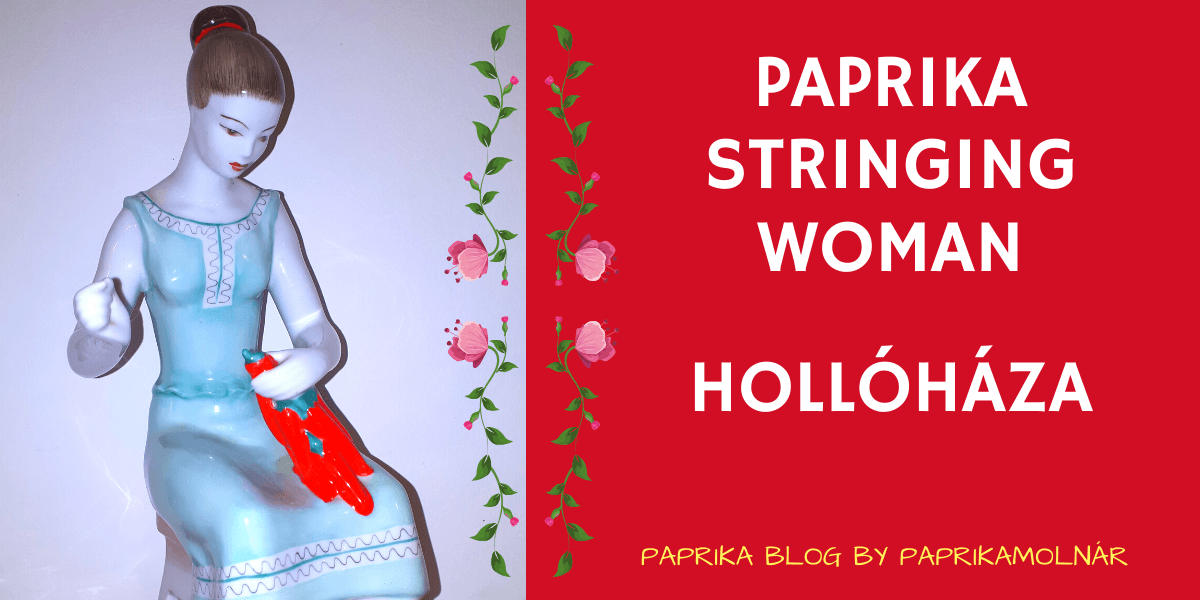The Paprika Museum item series have already portrayed a an old publication from the Millers news and one of the paprika tin boxes from the Szécsi family. We continue in January 2020 with a sculpture of the Paprika-stringing woman. The sculpture beautifully harmonizes folk art with industrial art and its unique history begins in Hollóháza Porcelain Manufactory.
Glassworks, stoneware and Hungarian porcelain art
The Hollóháza Porcelain Manufactory was created in 1777 to produce glass articles. The small glasswoks drew on the rich natural resources of the nearby woods that was needed for the furnaces.
When resources were running low and modernization was inevitable, landowner Count Károlyi converted the place into a ceramic factory in 1831 to produce for household. In the second part of the 19th century, under the creative and aspiring management of Ferenc Istványi, Hollóháza grew into an important manufactory of white glazed tableware. While Hungarian Zsolnay porcelain tableware and decoration items were used by the elite, Hollóháza deliberately produced more folksy artifacts for more basic and everyday needs. The decorations suited the users’ taste: bright flower bouquets, deep red roses and cheerful green leaves figure mostly on the articles. What’s admiring is that Hollóháza, this very small village of under 1000 people, drew its staff for much of its history from the village people: the designs and knowledge were passed down within the family.
Things never remain the same and during the chaotic and destructive times in the first half of the 20th century ownership changed several times and modernization attempts failed. In 1948 the manufactory became state property and Hollóháza produced porcelain insulators, rings and other industrial articles.
Aesthetics and art returned only in the 1970s, when Hollóháza was rediscovered. Renowned designers such as Endre Szász or Viktor Vasarely were invited to Hollóháza to create special designs.
Paprika-stringing woman: aesthetics of hard labour
The sculpture of the Paprika-stringing woman probably comes from the 1980s.
She’s sitting on a stool. Under the stool you can see the brand mark. In her left hand she’s holding a bunch of red paprika pods which look like a string. The paprikas look too big compared to her size but that’s how the accent feature – the paprikas – are clearly visible. She’s all barefoot like a real hard-working peasant woman, but her dress, hair style, even a hint of some make-up give her middle class or city look. She’s young and pretty-looking.
The paprika-stringing woman is part of a big family of porcelain portrays of hard-working people from yesterday: herders and shepherds, farmers, young and old, man and women in folk costume. There’s an interesting duality in this presentation: every-day and hard work becomes a piece of art and the life of previous generations go into a class cabinet. It freezes into stone. The aesthetics of hard labour?
The Paprika-stringing woman in our Paprika Museum is not alone, we have several of these pretty sculptures. We found them at Mórahalom flee market but there are on-line ads offering similar pieces everywhere. Maybe you have one at home yourself.
Tetszett a cikk? Ha szeretne még paprikás és fűszeres témában, heti rendszerességgel cikket olvasni, hírt kapni az ÚJ paprika elkészültéről, iratkozzon fel hírlevelünkre. Subscribe to our Blog and enjoy our Paprika Poster.







